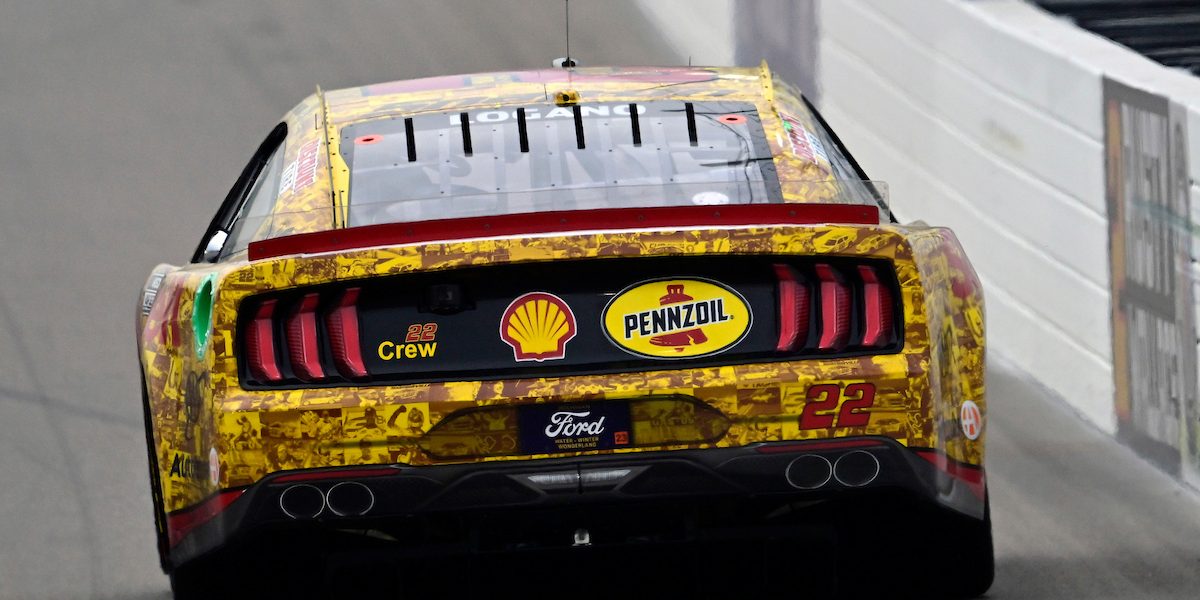How fast do Daytona 500 cars go?


You’re likely here because you’re intrigued by the world of NASCAR, and more specifically, you’re asking, “How fast do Daytona 500 cars go?”
Daytona 500 cars can reach speeds up to 200 mph, thanks to their advanced aerodynamics and powerful engines.
In this article, you’ll discover the engineering marvels that allow these speed machines to achieve such velocities. We’ll also explore the regulatory factors that play a role and examine how driver skill impacts speed.
Table of Contents
A Detailed Explanation of How Fast Daytona 500 Cars Go
The Engineering Behind the Speed
The first thing to understand is that the speed of a Daytona 500 car is not just a function of its engine; it’s a symphony of engineering elements working in perfect harmony. High-performance engines, often V8, are tuned to produce anywhere between 750 to 800 horsepower. This is combined with an aerodynamic design that minimizes drag and maximizes downforce. The materials used are also incredibly light yet durable, reducing the overall weight of the car and allowing it to reach higher speeds.
Regulatory Factors
It’s important to note that the cars are subject to certain restrictions to maintain a level playing field and ensure driver safety. NASCAR has guidelines about car weight, dimensions, and engine specifications. Over the years, NASCAR has also implemented restrictor plates in certain races, including the Daytona 500, to limit the speed and horsepower for safety reasons. However, despite these restrictions, Daytona 500 cars still manage to break the 200 mph barrier.
The Role of the Driver
The skill of the driver can’t be overstated when discussing the speed of a Daytona 500 car. Masterful driving techniques, such as drafting (where a car follows closely behind another to reduce air resistance), can provide a significant speed boost. Drivers also need to have an acute sense of timing and reflexes, especially when navigating the 31-degree banking turns at Daytona International Speedway, to maintain high speeds without losing control.
Variable Conditions
Lastly, various external factors can affect speed. Weather conditions, tire wear, and even the time of day can all have subtle influences. A hot track surface, for instance, could make tires more grippy, affecting the car’s handling and, by extension, its speed.
Here’s everything else you need to know about the thrilling world of Daytona 500 speeds.
How Aerodynamics Influence Speed
When it comes to NASCAR races like the Daytona 500, aerodynamics is not just a buzzword; it’s a critical factor that can make or break a race. The car’s design aims to reduce air resistance, also known as drag, as much as possible. Specialized components like the front splitter and rear spoiler are fine-tuned to direct air flow in a way that minimizes drag and maximizes downforce. This allows the car to stick to the track while reducing the energy required to maintain high speeds.
Advanced computational methods and wind tunnel tests are often employed to perfect the aerodynamics of a Daytona 500 car. Teams will spend countless hours tweaking even the smallest details to gain a fraction of a second advantage, proving that in the world of NASCAR, aerodynamics is a high-stakes game.
The Importance of Tires
Tires are the only part of the car in contact with the track, so their condition and type can dramatically affect speed. Slick tires with minimal tread are used to maximize grip, but they wear out quickly. A good pit strategy, therefore, includes well-timed tire changes that can offer a speed advantage during different stages of the race.
Tire pressure is also meticulously managed. Lower tire pressure can offer more grip but might slow down the car due to increased rolling resistance. On the other hand, higher tire pressure can make the car faster but might lead to a loss of control. Finding the right balance is crucial for maximizing speed while ensuring safety.
Fuel Strategy and Pit Stops
In a race that spans hundreds of miles, fuel strategy becomes another critical aspect affecting speed. Drivers and their teams have to decide when to make pit stops for fuel and how much to take on each stop. Fewer pit stops can mean a faster overall race time but can also risk running out of fuel before the finish line.
The timing of pit stops can also be influenced by caution flags and other race events. A well-timed pit stop during a caution can allow a driver to refuel and change tires without losing much time, giving them a speed advantage when the race resumes.
The Evolution of Speed in NASCAR
NASCAR has come a long way since its inception in 1948. In the early years, cars were barely modified versions of street-legal automobiles. Today, Daytona 500 cars are bespoke machines built from the ground up for speed and performance. Innovations in technology, engineering, and materials have continually pushed the envelope, making cars faster and safer.
However, with increasing speeds come increasing risks. NASCAR continuously updates its safety guidelines to find the right balance between speed and safety. Roll cages, HANS devices (Head and Neck Support), and SAFER barriers on tracks are among the numerous advancements in safety that allow drivers to push the limits of speed without compromising their well-being.
Spectator Experience and the ‘Need for Speed’
Speed is not just about the thrill for the drivers; it’s also about the experience for the spectators. The electrifying atmosphere at Daytona International Speedway is charged by the sheer velocity of the cars. Fans will attest that the sound of a car roaring past at nearly 200 mph is unlike anything else. It’s what draws millions to watch the Daytona 500, either in person or on television.
However, it’s not just the speed but also the close competition that makes it exciting. The fact that cars are so evenly matched, thanks to regulations, means that races are often won by mere fractions of a second, keeping spectators on the edge of their seats until the very end.
The Economic Impact of Speed
Speed has a significant economic impact on the sport. Faster cars mean more exciting races, which draw larger audiences. Larger audiences mean higher revenue from ticket sales, sponsorships, and broadcasting rights. Teams also compete for lucrative sponsorship deals, and having a fast car can often make the difference in securing these deals.
The quest for speed also drives technological innovation, not just in the automotive sector but also in related industries like materials science and data analytics. These innovations often have applications beyond NASCAR, impacting other forms of motorsport and even consumer automobiles.
How fast do Daytona 500 cars go? – Final Thoughts
You came here wondering, “How fast do Daytona 500 cars go?” Now, you’ve not only discovered that these engineering marvels can reach up to 200 mph but also delved into the multitude of factors that allow them to reach such thrilling speeds. From the role of aerodynamics and tires to the strategies employed during the race, it’s clear that speed in the Daytona 500 is a complex, exhilarating subject. Keep watching, because the quest for speed never stops, and who knows what new records will be set in the races to come.
How fast do Daytona 500 cars go? – Frequently Asked Questions
How do Daytona 500 cars compare to Formula 1 cars in terms of speed?
Daytona 500 cars can reach up to 200 mph, while Formula 1 cars can go over 230 mph. However, the two are built for different types of racing and aren’t directly comparable.
What is the fastest lap ever recorded at the Daytona 500?
The fastest lap ever recorded at the Daytona 500 was by Bill Elliott in 1987, clocking in at 210.364 mph. However, this was before restrictor plates were implemented to limit speed for safety reasons.
Do Daytona 500 cars have speedometers?
Yes, Daytona 500 cars have speedometers, but they are not as detailed as those in regular cars. Drivers mostly rely on RPM (Revolutions Per Minute) and their senses to gauge speed.
How much does the engine contribute to the speed of a Daytona 500 car?
The engine is a significant factor but not the only one. Aerodynamics, tires, and driver skill also play a crucial role in determining the car’s speed.
Why do Daytona 500 cars not have headlights?
The cars have decals that look like headlights, but they are not functional. Since all NASCAR races, including the Daytona 500, are run on tracks with ample lighting, real headlights are unnecessary.
How do pit stops affect the overall speed in the Daytona 500?
Pit stops are essential for refueling and tire changes but can cost time. A well-timed and efficient pit stop can provide a significant advantage in a race where every second counts.
With this FAQ, you’re now fully equipped to understand the incredible world of speed that defines the Daytona 500. Keep your eyes peeled for the next race; it’s sure to be a high-octane experience!










